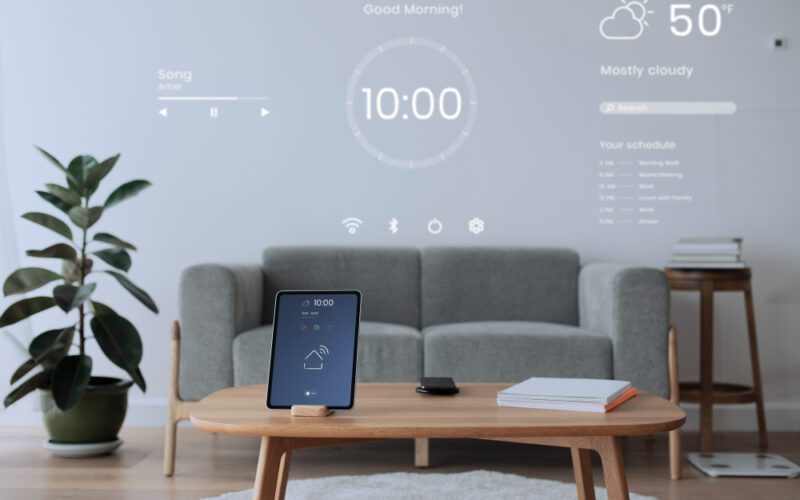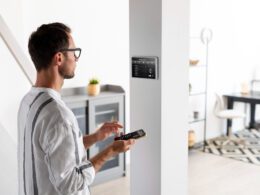Smart homes in 2025 are no longer about flashy devices—they’re about intelligence, adaptability, and security. From AI-powered automation to wellness-focused design and privacy-first systems, the connected home is evolving into something far more personal and intuitive.
AI-Powered Adaptive Automation
Smart homes are becoming proactive. With machine learning and real-time behavior tracking, AI systems can now adjust lighting, temperature, and appliances before you even ask. For example, smart HVAC systems learn your habits and manage energy use automatically.
As a result, you no longer have to program scenes—your home does it for you. According to Keel Custom Homes, homes in 2025 will offer near full automation for everyday routines.
Matter-Branded Compatibility
The Matter protocol, backed by Google, Apple, Amazon, and Samsung, is solving one of the biggest problems in smart home tech: device fragmentation. Matter enables cross-platform communication, so your smart lock, thermostat, and lights can work together—regardless of brand.
This means users can finally mix and match products without worrying about multiple apps or hub compatibility.
Wellness-Focused Smart Living
Health is becoming central to smart home design. Systems now track air quality, regulate lighting to support your sleep cycle, and even adjust humidity based on biometric data. As The Spruce reports, homes are turning into wellness zones—with circadian lighting, mood-enhancing speakers, and scent diffusers synced to your routine.
Energy Optimization & Sustainability
Beyond comfort, smart homes in 2025 are built for efficiency. AI helps manage when high-energy appliances run and integrates with solar panels and backup batteries. According to Hack the Nest, smart energy systems can cut utility costs by 40–60%, making sustainability a standard feature, not a luxury.
Privacy-First Smart Devices
As smart systems become more embedded, privacy has taken center stage. Today’s consumers demand transparency. Devices now include physical camera shutters, local processing (no cloud), and on-screen notifications when listening.
According to The Spruce, privacy-first design is expected to be one of the top selling points this year—and it’s influencing how devices are marketed and reviewed.
Smart Homes for Aging in Place
One of the most powerful applications of smart home tech is helping older adults stay safe and independent. From fall detection and medication reminders to voice assistants that schedule appointments, these systems reduce the need for in-person support.
As Marie Claire points out, AI is increasingly integrated into wellness and elder care—bridging the gap between medical tech and lifestyle.
Natural Interfaces: Beyond Voice
Voice control isn’t going away—but it’s no longer the cutting edge. In 2025, interfaces are expanding to include gesture control, facial recognition, and AR overlays. Smart glasses and ambient displays allow users to adjust home settings with a glance or hand movement, creating a seamless interface between people and their spaces.
Conclusion
The smart home of 2025 isn’t just convenient—it’s intuitive, secure, and deeply personal. Trends like AI automation, Matter compatibility, wellness integration, and privacy-first features signal a shift in how we live with technology. And as homes continue to adapt to their owners, they’ll become not just smart—but genuinely thoughtful.









